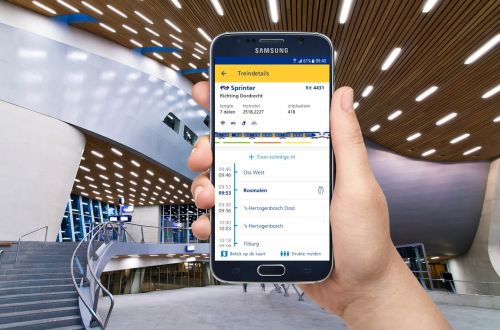The Zitplaatszoeker app, which is still under test, uses a colour-coding system to display levels of seat occupancy through the train.
As well as helping customers find a seat, NS says a more even distribution of passengers through the train could yield operational benefits with reduced dwell times at stations.
The app has been developed with the support of NS conductors, who have indicated that up to 30% of standees might find a seat if they move to another part of the train. However, conductors have also said that announcements about available seats are rarely heeded by standing passengers.
The seat searcher app uses data generated by weight sensors on the track. These were originally installed to weigh freight trains as part of a plan for weight-based track access charging.
The weight data is cross referenced against the weight of each vehicle to help determine the occupancy rate. The technology also relies on other factors to map seat occupancy, including sensors in the HVAC system which measure CO2 levels to determine how many passengers are on board.
However, not all trains are equipped with this technology and the app has to take into account this variation in the fleet.
In recent years NS and Dutch infrastructure manager Prorail have tested a train occupancy display system on the platforms at Den Bosch station. This guides passengers to a position on the platform that corresponds to the availability of seats on the approaching train.
The Arnhem - Nijmegen - Den Bosch line has been selected for the trials as trains on this route are notorious for unequal distribution of passengers.
If these trials are successful, NS will extend the app to other routes with the eventual aim of achieving network-wide coverage.

